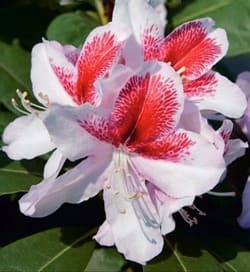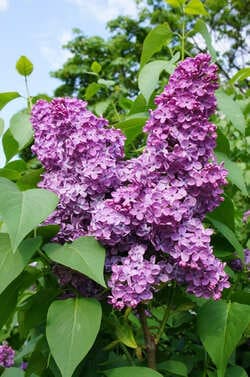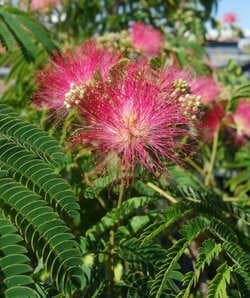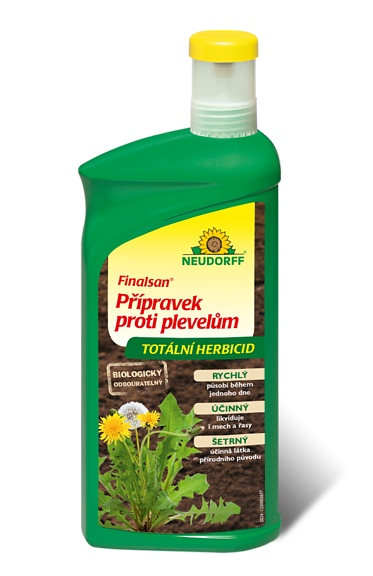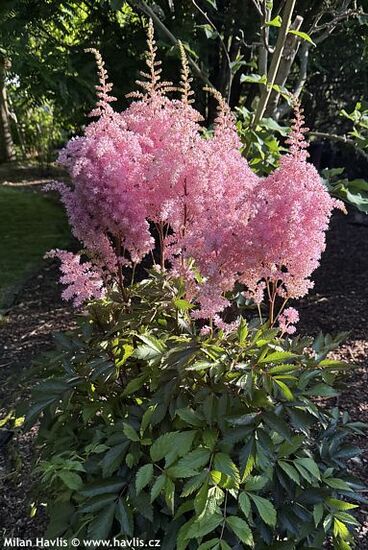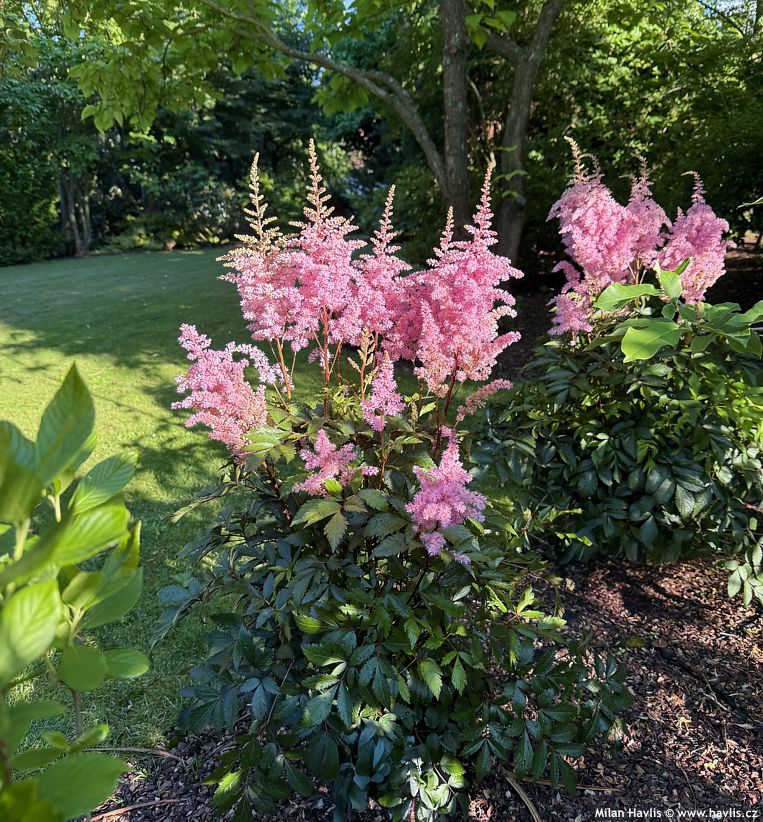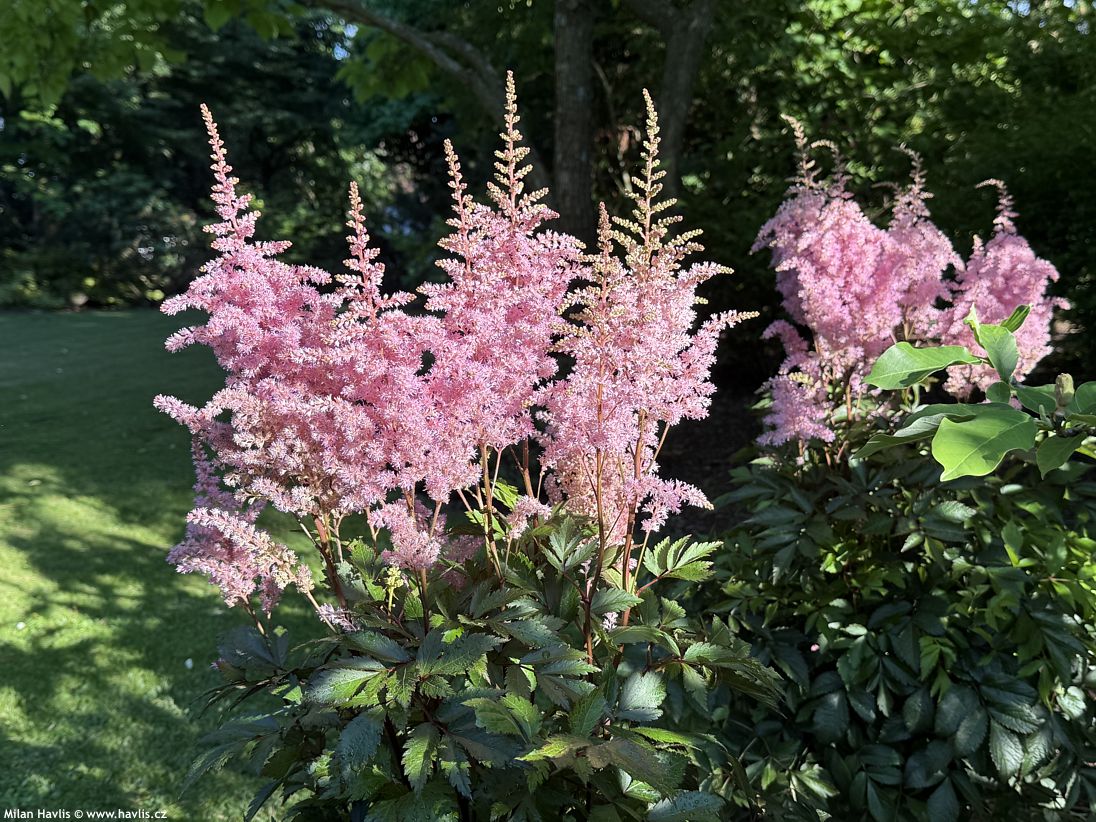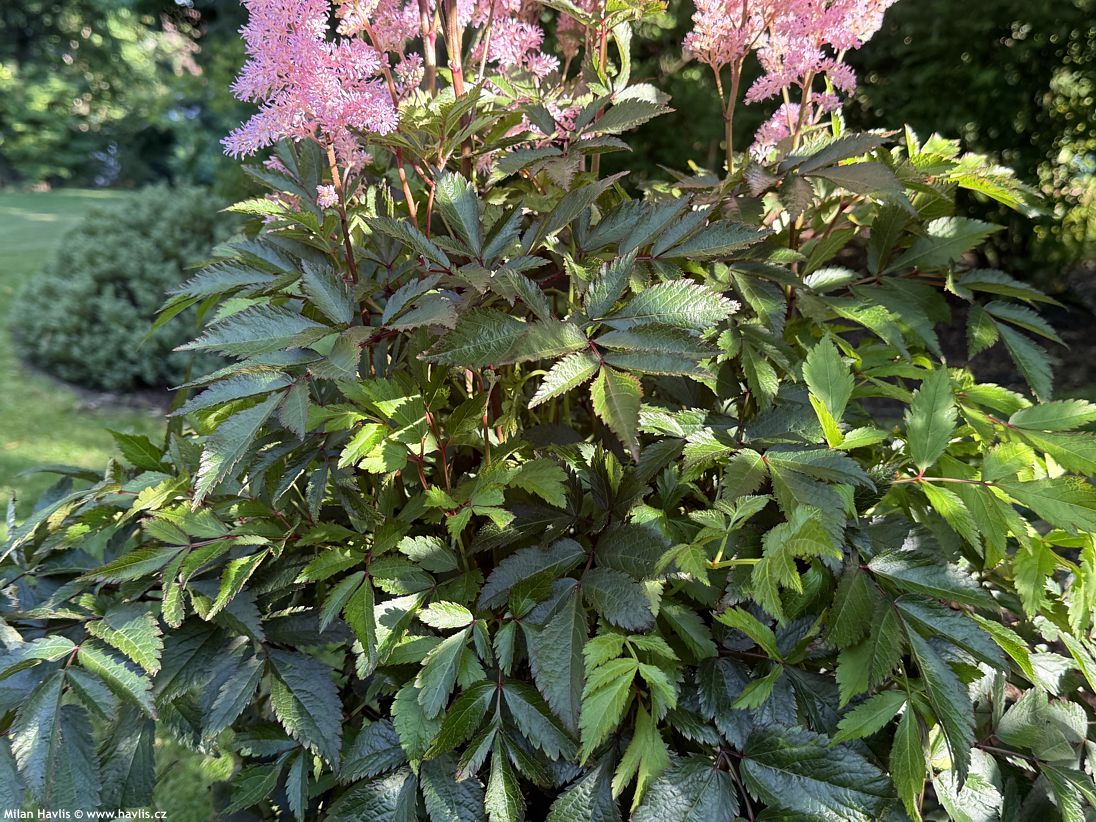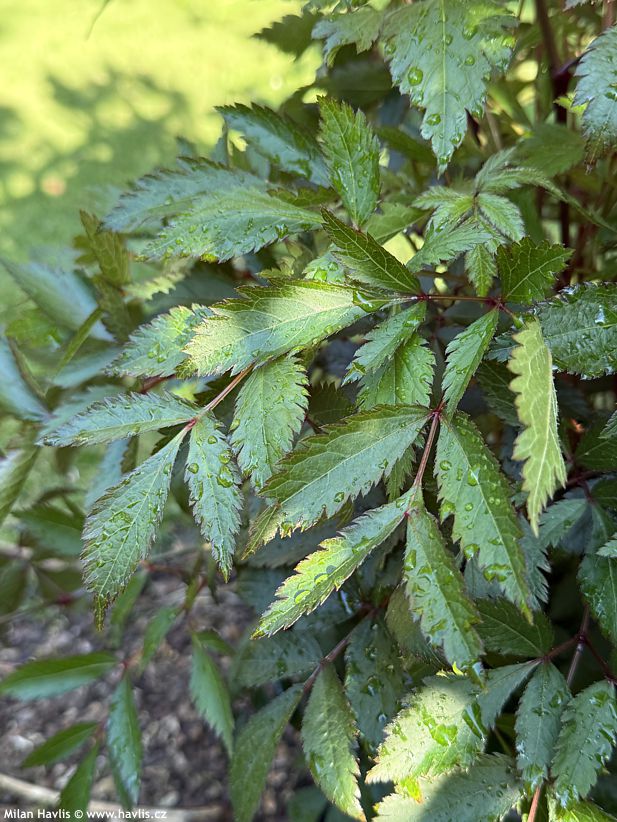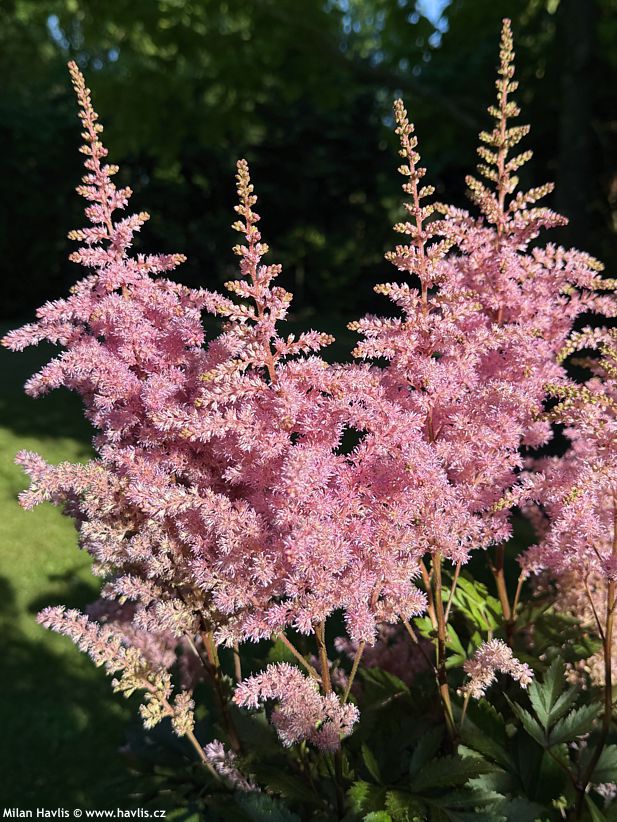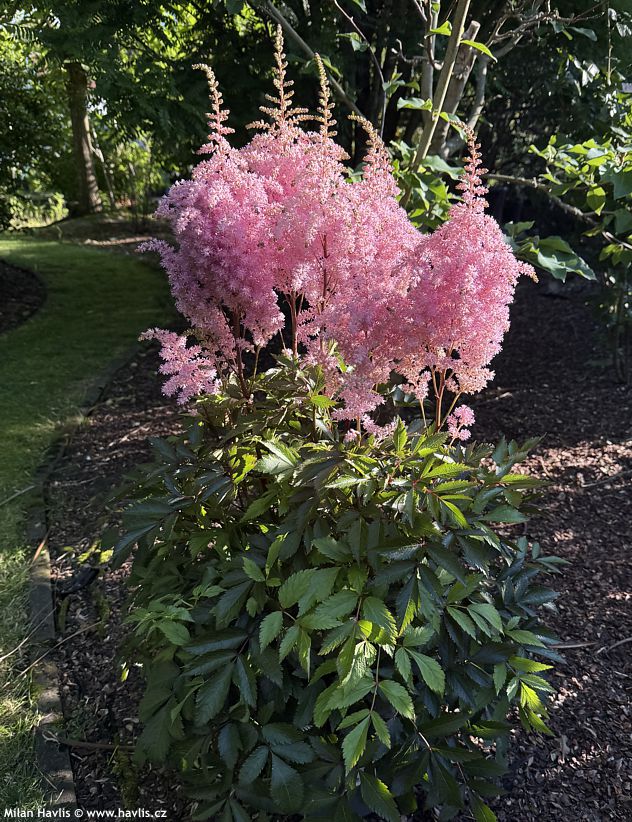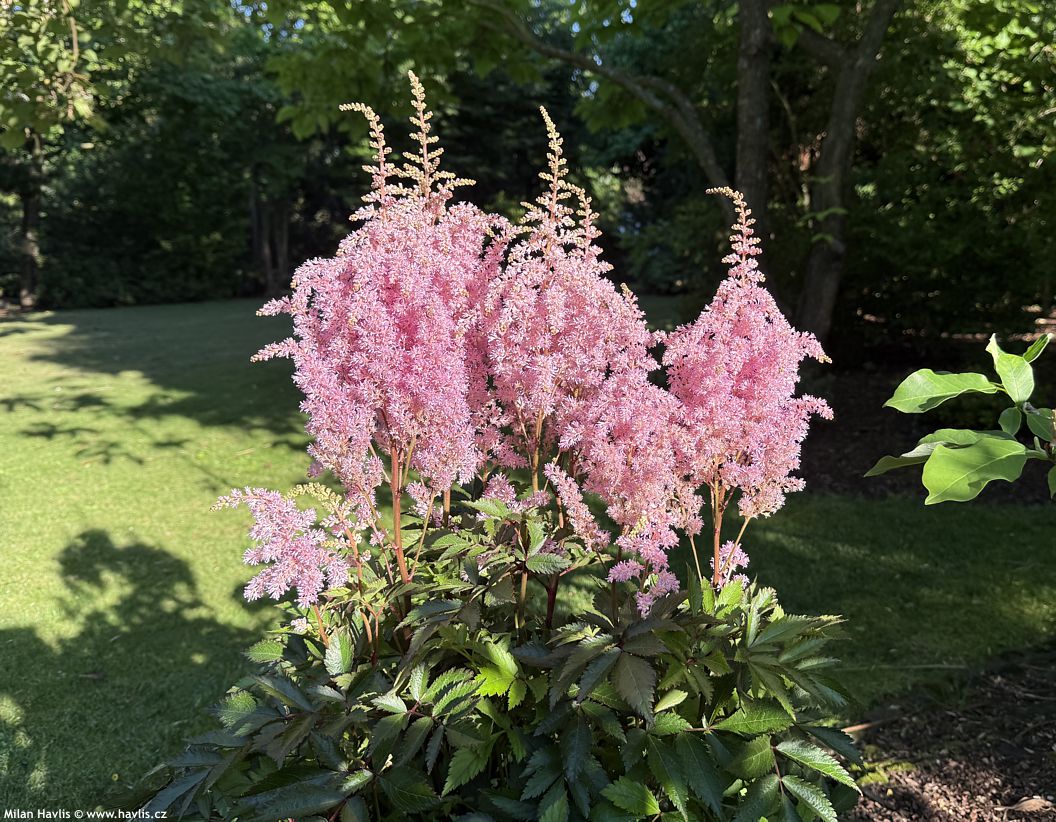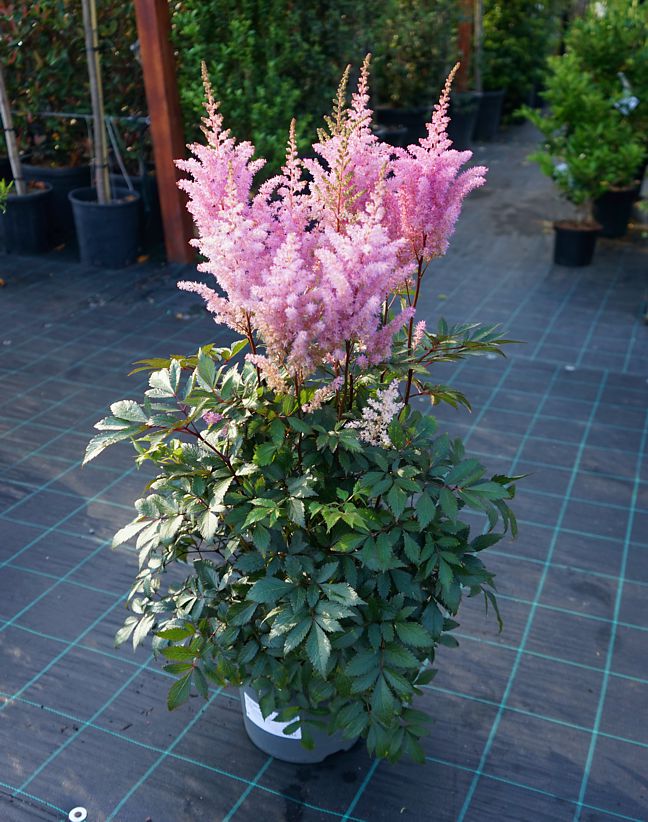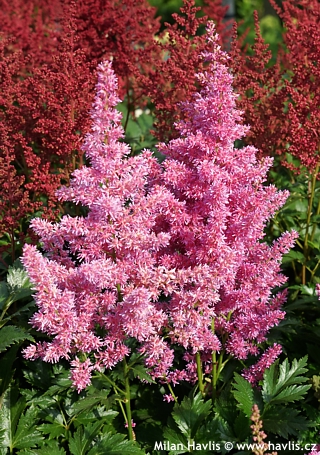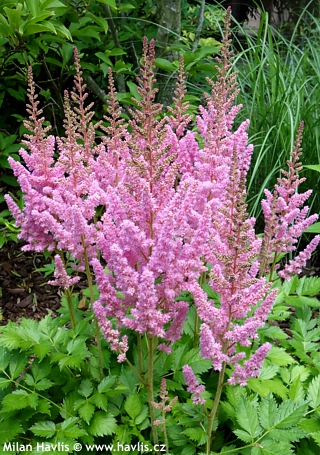Astilbe x arendii 'GLORIA PURPUREA' false spiraea
Astilbe
The genus Astilbe comprises about 18 species of perennial, rhizomatous plants in the saxifrage family (Saxifragaceae), native primarily to East Asia (China, Japan, Korea, the Himalayas) and partly to North America. The first specimens were introduced to Europe in the 19th century, for example from Japan by Dutch botanist Philipp Franz von Siebold (1796–1866). Ever heard of him? A rare and beautiful summer-flowering magnolia, Magnolia sieboldii, was named in his honour. In Europe, Astilbe — known as false spiraea — quickly gained popularity for its elegant, feathery flower plumes and decorative foliage. A significant breakthrough in breeding came thanks to German horticulturist Georg Adalbert Arends (1863–1952), who in the early 20th century developed numerous hybrids known as Astilbe × arendsii. This line, created primarily by crossing A. japonica, A. thunbergii, and A. chinensis, brought a revolution to garden planting — offering a broader colour palette, longer flowering times, and greater adaptability to various conditions.
Gloria Purpurea is a historic cultivar of false spiraea bred by Georg Adalbert Arends around 1920, at the peak of his hybridizing work. Its pedigree includes all the species he used in his breeding: A. chinensis (for dense inflorescences and drought tolerance), A. japonica (for early flowering and a compact habit), A. thunbergii (for height and airy grace), and A. davidii (for robust growth and long flower spikes). Together, these qualities gave rise to a plant of striking elegance — a cultivar whose reputation still endures, as it remains one of the most sought-after selections today.
Gloria Purpurea is a relatively tall variety, with vivid pink to purplish flower panicles that stand erect and full. It begins blooming in early July and, under ideal conditions, can flower continuously into late August. Its leaves are deciduous, glossy, deep green, and finely divided, with a bronzy tint that becomes more prominent in autumn. The plant grows to a height of 60–70 cm and is generally untroubled by pests or diseases. Try pairing it in a moist border with bold-leaved hostas, bold-coloured Heuchera cultivars, and dark-leaved Ligularia — their broad foliage offers a powerful contrast to the finely textured leaves of the astilbe. And for a longer season of interest, add early-blooming perennials such as Brunnera and Pulmonaria, which shine in springtime and then quietly recede, allowing the astilbes to take centre stage in high summer — while their lower stature and distinctly textured foliage still provide valuable contrast.
If the plant blooms profusely in its first flush and is growing in nutrient-mediocre or even poor soil, the foliage may appear exhausted after flowering. In that case, it's worth cutting the plant back to the ground, feeding with a liquid fertilizer, which will encourage it to regrow; the fresh foliage will remain decorative until the end of the season. Regular feeding also promotes reblooming throughout the summer holidays.
In their natural habitat, astilbes thrive in mountain ravines and damp forests, where they appreciate shade and moist soil. Thanks to their tolerance for both shade and moisture, they have become popular perennials for planting around ponds and in woodland gardens. They are not difficult to grow as long as they have proper conditions: rich, moisture-retentive soil and a preference for partial shade over full sun. However, given regular watering or a naturally damp site, they will also perform well in full sun. Good fertilization enhances both the size and quality of the blooms. Avoid overly alkaline soils and compacted clays that dry out in summer — they are not suitable. For optimal performance, divide and rejuvenate clumps every four years, removing old and dying rhizomes. Do this in early spring before new growth starts. Old foliage and flower stalks should also be cut back in early spring. Fully hardy to approximately –34 °C (USDA zone 4). Perfect for large planters, too, where it will require more frequent watering and feeding.
Last update 29-06-2025
Goods are shipped all over Europe. For Russia and U.K. and for further details please read about SHIPPING OPTIONS HERE.
Are you interested in a serious discount for orders NOV-FEB? Check your options here.
THE PRICES INCLUDE VAT of 15%. For quick conversion you can use 1 CZK = approx. 0.04 EUR
- STANDARD QUALITY - Plants of this group are 1st class quality with number of branches and overall density adequate to their size and age, considering they were container grown.
- DE LUXE QUALITY - This label guarantees a luxurious quality of manually selected plants that, compared to their height and age, are exceptionally dense and beautiful.
- EXTRA - These plants are usually mature and bigger specimens with exceptional overall appearance.
- STANDARD (as described in the plant form) means a tree with a trunk of 190-210 cm and a crown at the top, unless specified differently. The commercial size for trees is their girth measured in the height of 1m from ground.
- HOBBY - These plants are of the same quality as our standard-quality plants but younger and therefore cheaper.
- SHRUB - a woody plant with branches growing bushy from the ground level.
- HALF-STANDARD or MINI-STANDARD - a small tree with shorter trunk, its size is usually specified.
- FEATHERED - These are trees with branches growing already from the base of the trunk and up along the stem.
- GRASSES and PERENNIALS - Sizes given usually read the diameter of the pot or the clump, as specified.












